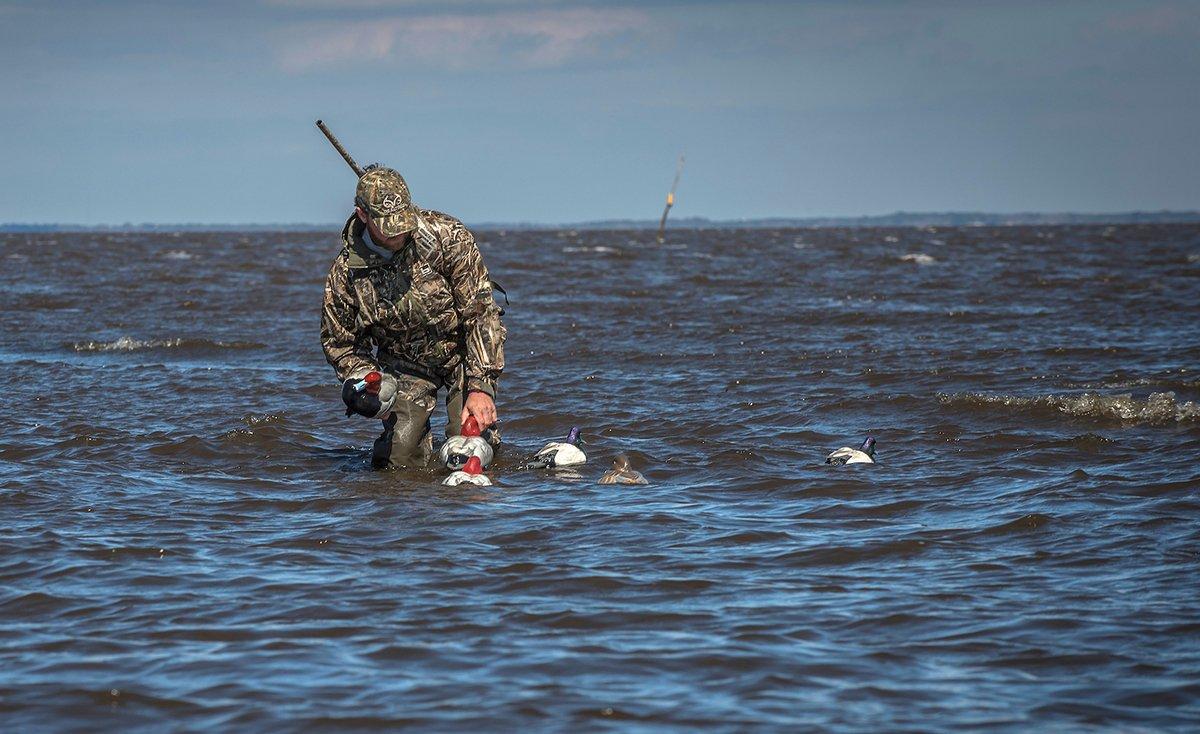The same spread won't cut it every day. Tailor your rig to the circumstances.
On the surface, decoy rigs for diving ducks can be simple: Throw out as many highly visible blocks as you can safely carry in your boat or lug to shoreline spots.
But nothing is that easy. And actually, rigging diver decoys can become somewhat involved depending on circumstances or the species you're hunting. Here are a few diver-block considerations I've learned through the years.
1. Specialize for Each Species
When the flight is on and conditions are right, it doesn't matter much what species of diver decoys you use. A large spread of black-and-white fakes will work for cans, redheads, bluebills, ringbills, buffleheads, mergansers and, sometimes, goldeneyes. But the flight isn't always peaking, and conditions aren't always ideal. During those times, you might want to tweak the types of decoys in your setup.
The most obvious cry for change occurs late in the season, when many cans, 'bills and the like have moved on and goldeneyes dominate the scene. Whistlers typically prefer to associate with their own kind, so if they're the main game, your rig should prominently feature goldeneye decoys. If you don't have dozens of whistler fakes, at least run a tail with all goldeneyes. Or, if you're open-water hunting, switch out one or two outside lines to all goldeneyes.
Likewise, if the divers you're hunting seem especially pressured and wary, it might pay to get species-specific with your spread. When hunting stale canvasbacks on the Mississippi River, for example, a large rig of all cans might help birds finish better or at least appear more realistic. Gauge the situation and the reactions of birds, and switch your decoys appropriately.
2. Debate Weight
I love modern decoys and own a pile of them. They look fantastic, and their light weight helps you pack and carry far more fakes than if you were lugging old wooden blocks.
But sometimes, that light weight comes at a price. Plastic decoys set close to a lee shore or otherwise relatively calm water swim and move naturally, but those riding a chop will often bob or jump up and down. No duck does that.
In situations when you'll likely face some chop — layout hunting or a shore blind with a parallel or onshore wind, for example — heavy decoys pay dividends. Yes, they're a pain to carry and deploy, but they ride the wind and waves like a real duck.
My buddies and I run mostly heavy burlapped decoys in our open-water rig. The boat and motor carry the load, so weight isn't an issue, and we usually hunt in at least some chop. Conversely, in the Dakotas, I typically carry in a sack of light decoys — except when it's exceptionally windy. Then, I switch out six decoys for heavier models and run a tail with those. Yeah, they're heavy, but they look far more realistic on the water.
3. Spread Out
Run whatever spread shape you like. Many work. However, keep conditions in mind when placing blocks. Multiple-decoy lines set fairly close together look great when the wind blows. During calm days, however, they look like … well, several lines of decoys set close together. Consider switching to single lines during relatively calm days, or at least drop several singles between lines or behind your layout boat or blind to make your spread look relaxed and natural.
Also, if you're running single-line decoys exclusively, increase the space between individual blocks on calm days. Make your spread look like a relaxed, content raft of ducks.
4. Be a Tweaker
Finally, don't be afraid to change your decoy setup. Many folks — and I'm guilty of this — fall into tried-and-true spreads and hesitate to experiment. Rearranging 100 decoys is a lot of work, after all. But if ducks tell you they want something else by failing to finish, landing outside your blocks or skirting the outside of the decoys, you should adjust your approach. Increase your landing area, or run a longer tail as an approach ramp. Spread out your blocks, or relocate them to facilitate better shots. Being stubborn often nets nothing. Adapting and being inventive can result in more black-and-white ducks in your boat.
Click here for more Realtree waterfowl hunting content. And check us out on Facebook.








